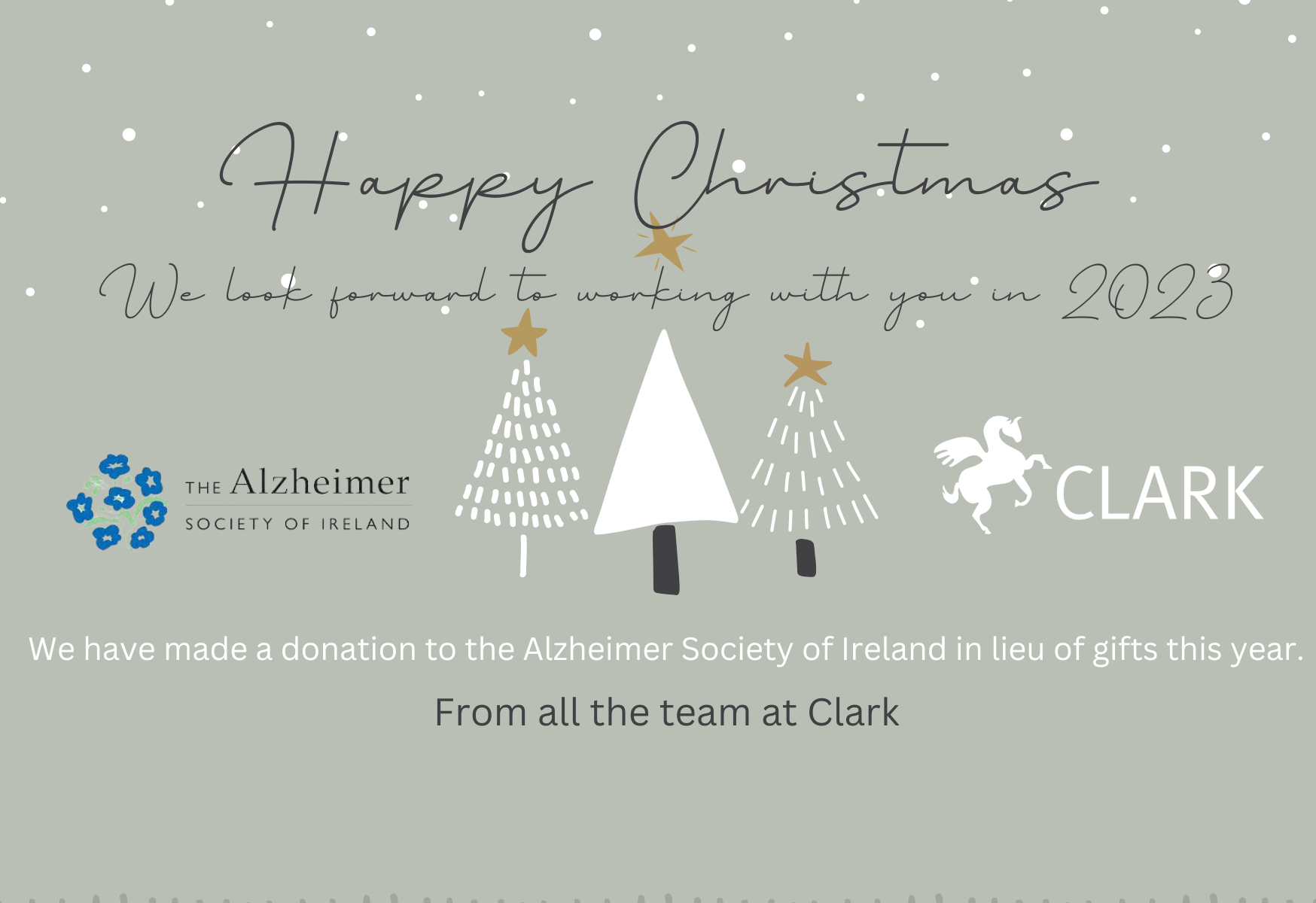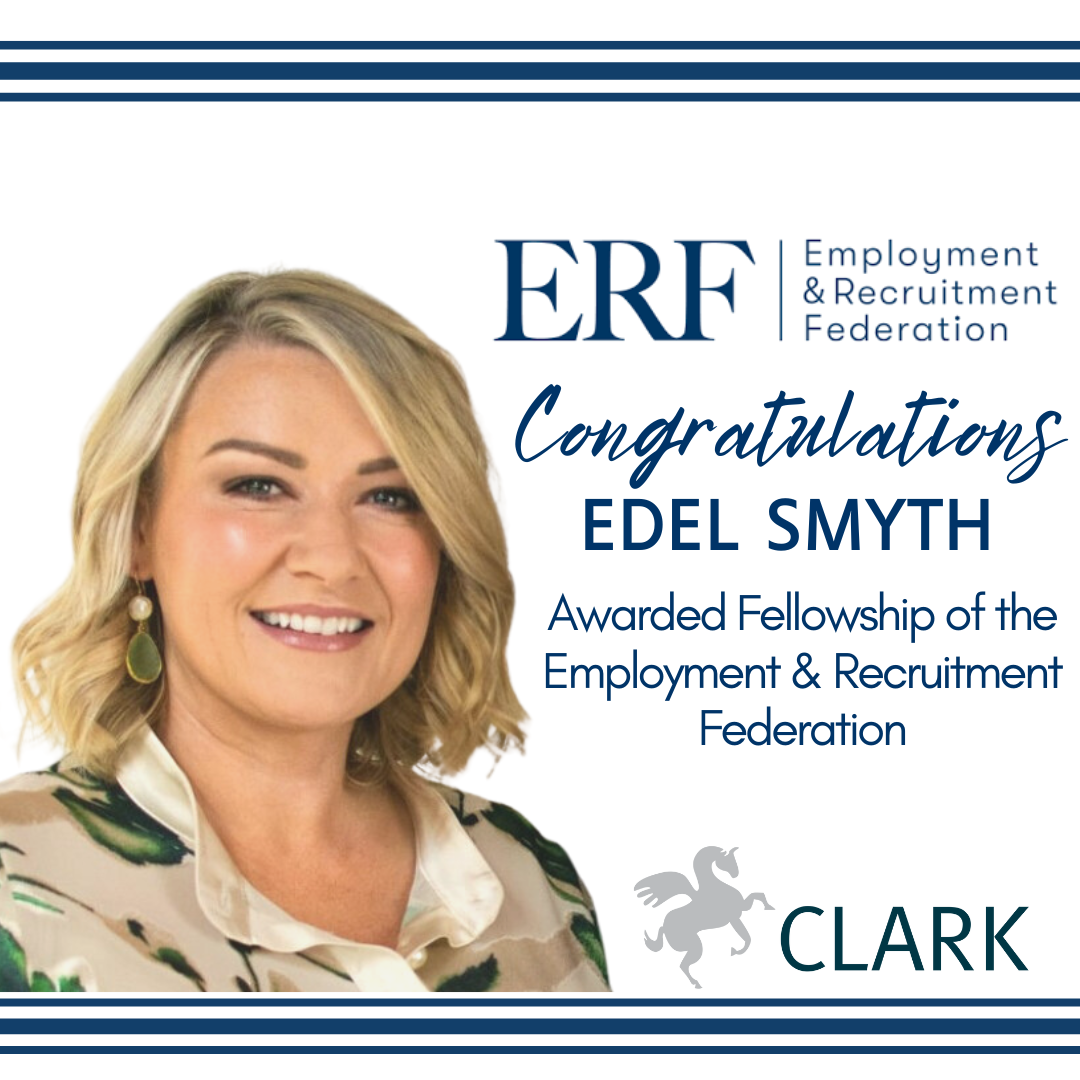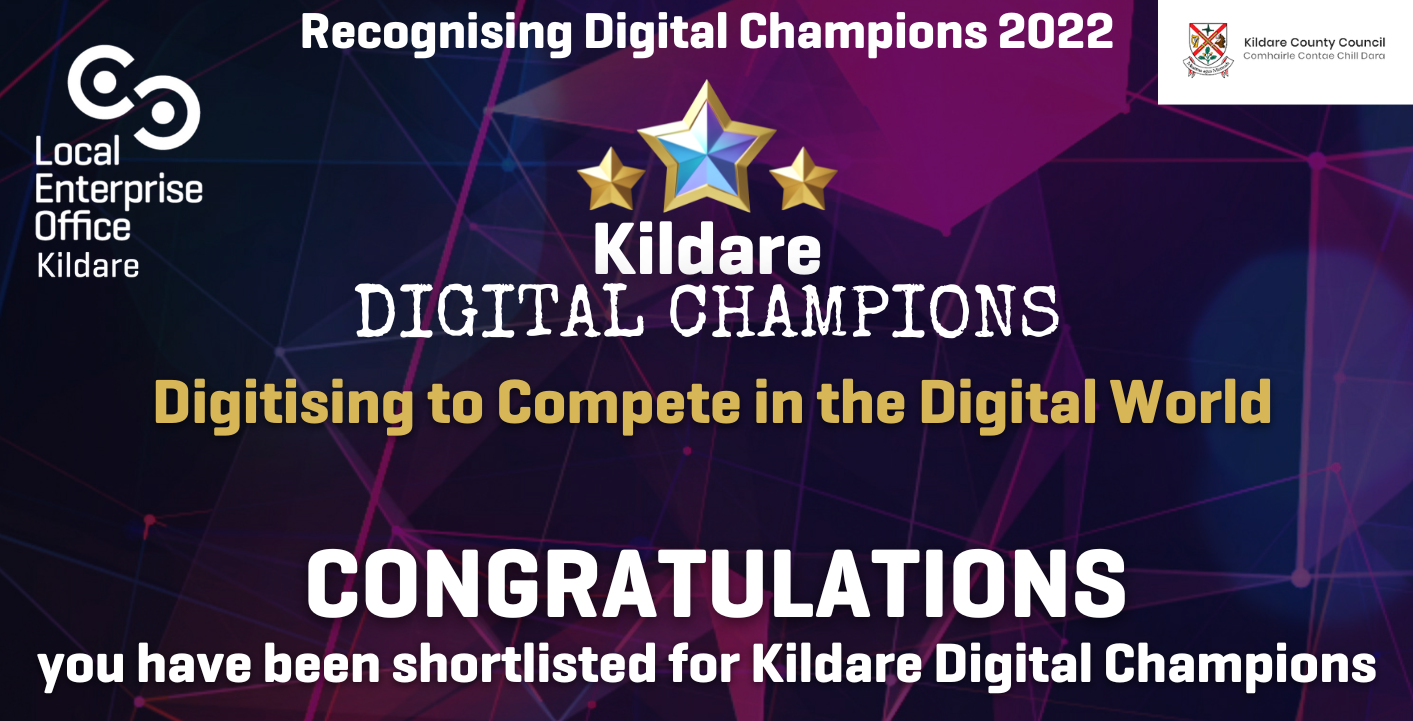Season’s Greetings from the Clark team
Chief Executive Officer opportunity with RACE
Clark is delighted to partner with Racing Academy & Centre of Education (RACE) for the recruitment of a Chief Executive Officer to lead, inspire and develop the strategic agenda for Education and Training for Ireland’s only dedicated training and educational academy for the Thoroughbred Industry. Based in Kildare town close to The Curragh Racecourse this role is an integral role in providing accessible solutions of education, training, and development for the Thoroughbred Industry.
RACE is Ireland’s national academy for the horse racing industry, a not-for-profit educational enterprise and registered charity providing training and further education services for a broad range of Irish and international clients in the Thoroughbred sector. Combining high performance and education RACE is a unique centre focused on bringing together the dual dynamic of sport and industry specific solutions in the space of high performance, education and development.
Reporting to the Board of Directors, Racing Academy & Centre of Education CLG your responsibilities will include but are not limited to the following:
Responsibilities:
- Promoting and cultivating a learning environment to facilitate agile and sustainable learning across a broad demographic and geographically dispersed base supporting a dynamic Industry
- Collaborate, design, and develop Industry specific solutions to lead standards in key areas
- Sponsor and develop the future of high performance for elite athletes – lead the evolution of high performance models for licenced Jockeys and racehorse trainers within the industry
- Business development including industry collaborations and strategic alliances (national & international)
- National and international stakeholder management on behalf of RACE. Representing RACE in national and international forums, public relations, fundraising activities to grow the commercial agenda
- Leadership and development of the management team and broader group of staff reporting directly and indirectly to the CEO
- Effective financial leadership and management
- Active collaboration with industry bodies and other stakeholders including educational boards and certifying bodies on quality assurance and output
- Development and implementation of corporate governance policies, procedures, and regulatory reporting
- Development and implementation of quality standards, safety and safeguarding environment and horse welfare
- Ongoing development of campus facilities, residential facilities, and services
Requirements:
- Minimum 5 years’ experience in a senior leadership role with direct responsibility for leading teams in either an educational or high performance sport environment
- Knowledge and experience of leading teams in areas of governance and change
- Strong stakeholder management experience
- Strong educational and personal development background. Knowledge of the education & training sector is desirable but not essential
- Proven ability to lead, develop and manage people and teams
- Passion for sport and people development
- Excellent communication skills and purpose-driven
- Strong commercial awareness and experience of strategic planning
- Flexible and adaptable mind set
Please contact Edel Smyth in confidence on 045 881888 or email your CV to raceceo@clark.ie
Closing date for applications is 10th December 2022 at 5pm.
Congratulations Edel Smyth awarded Fellowship of the Employment & Recruitment Federation
Clark Salary Guide 2023
Clark are pleased to present our annual salary guide for 2023.
The purpose of this guide is to provide you with detailed, accurate information about salary levels across Ireland with specific emphasis on the M7 corridor. We believe it will be a useful go-to tool for both employers and employees for planning purposes in 2023.
Our guide gives information across specific job sectors including Human Resources, Accountancy, Sales, Marketing, Business Support, Environmental Health & Safety, Quality, Manufacturing, Engineering, Supply Chain, Logistics and IT and Temporary staff.
It has been compiled using the salary details provided to us by over 5500 candidates who have registered with us during the period March-October 2022, an in-depth review of salary levels across 500 vacancies in our region in the same 8 month period and the analysis of salary guides for the year ahead provided by national and international specialists involved in the recruitment sector in Ireland.
What is evident is that salary rates are on the increase. This is due to both a continued battle for skilled people as well as the impact of inflation on the cost of living.
The change in the landscape of how we work and the future of work is creating both opportunities and threats to employers to attract and retain great people who know their worth. However, additional benefits such as more annual leave, the provision of a variety of well-being programmes and most importantly, the greater accommodation of flexible, hybrid/remote working all play a major part. With the unemployment rate set to fall to 4.1% and the IBEC annual HR Update Workplace Trends & Insights Report showing that more than half of respondents are planning to increase their headcount in 2023, there is little doubt that the high level of competition for talent will continue.
If you would like further information or we can help you regarding the information provided in this guide, please contact deirdre@clark.ie or call our experienced team on 045 881888.
Diversity in the workplace delivers for the bottom line
People seeking out business partners and employees who share their traits miss out on quantifiable benefits, research shows
American economist Paul Gompers has put a lot of time into studying the impact of diversity on business. He has looked at its effect on innovation and on performance, noting that hard evidence of its connection to the bottom line is not easily come by as pinning down what drives corporate decision making, especially in large organisations, can be difficult.
What Gompers, who is professor of business administration at Harvard Business School, needed was a test group operating within more limited parameters. This led him to the US venture capital industry because it tends to have a flat structure dominated by decision makers and the consequences of their decisions are usually pretty clear to see.
Gompers also chose this sector because its gender and racial composition has changed so little in almost three decades, with women and ethnic minorities hugely under-represented. Interestingly, however, Gompers found that VCs with partners who had daughters were more likely to hire women than companies with partners who had sons.
During research spread over a number of years, the Harvard professor looked at the investment decisions made by thousands of VCs. His findings are revealing. The more alike the teams, the lower their investment performance.
The success rate of acquisitions and IPOs was on average 11.5 per cent lower where partners had shared educational backgrounds (a quarter of all VCs with MBAs were Harvard graduates) while shared ethnicity reduced the investment success rate by between 26.4 and 32.2 per cent.
Writing about his research in a Harvard Business Review paper co-authored with research associate, Silpa Kovvali, Gompers says, “Diversity significantly improves financial performance on measures such as profitable investments at the individual portfolio/company level and overall fund returns. And even though the desire to associate with similar people – a tendency academics call homophily – can bring social benefits to those who exhibit it, including a sense of shared culture and belonging, it can also lead investors and firms to leave a lot of money on the table.”
To read the full article please click:
The Art of the Elevator Pitch
Hollywood screenwriters typically get three to five minutes to pitch their movie ideas, but it takes only around 45 seconds for producers to know if they want to invest. Specifically, producers are listening for a logline: one or two sentences that explain what the movie is about. If there is no logline, more often than not, there is no sale.
This is a valuable lesson for innovators in any field. Business leaders are often asked: What does your startup or product do? What’s your idea?
If they can answer in one compelling sentence, they can hook their audience and influence people to invest in their work. Though mastering the art of the logline is challenging, there are steps leaders can take to do so: (1) Keep it short. (2) Identify the one thing you want your audience to remember. (3) Make sure your team is on the same page.
To read the full article please click:
Clark announced as Finalists for the Kildare Digital Champion Awards
How ‘non-verbal communication’ is going digital
We’re used to reading body language and silent cues in person. With remote work, subtle ways we communicate are changing – and workers need to know how to adapt.
For the most part, our learned social skills mean most of us have some level of fluency in interpreting others’ non-verbal communication; it also means we know how to tacitly communicate ourselves. Think about, say, your inherent knowledge to smile when greeting a client, make eye contact in conversation and hold confident body language during an interview.
“If you want to influence people in a positive way, then your attitude and how you are perceived using non-verbal communication is very important,” says Mi Ridell, an expert in body language based in Stockholm, Sweden. Annemieke Meurs-Karels, a non-verbal communication expert based in the Netherlands, says people often react more to what you do than what you say, “because it communicates the underlying message – what you really think and feel, and your intentions”.
However, while we’ve been trained on the importance of non-verbal cues in person, in the digital workspace, this kind of communication can seem less important. Many work conversations now happen via online chats, and even video meetings can go ahead with cameras off. Yet, even when remote work doesn’t seem to include tacit cues, non-verbal communication is still happening. Take that switched-off camera, for instance: a 2022 survey of 200 executives showed that 92% of managers believed that employees who turned off their cameras during meetings were less likely to have a long-term future at their company.
Non-verbal communication is a two-fold concept.
Part of the equation is how others perceive you, and the other component is how you understand others through their own non-verbal messages. It is not an exact science, since there’s plenty of ambiguity in how you might interpret someone’s signal versus how another person might, says Meurs-Karels; it often depends on your own experiences and relationship to the communicator. The same can happen to you when you’re the communicator, of course.
Yet, despite these subjective discrepancies, the experts says non-verbal cues carry a lot of meaning for both parties – and it’s important to pay attention to them in any work environment, whether in-person or remote.
To read the full article please click:
How to Help an Employee Figure Out Their Career Goals
It’s not always possible to help the people we supervise identify and work toward their career goals. But having a sense of purpose and a feeling of momentum in achieving our career goals is powerful — so when we can assist our employees in getting there, it’s a meaningful way we can make a difference in their lives and their professional success. In this piece, the author offers three strategies managers can use if they’re managing someone who is unsure of their career path: 1) help them analyse patterns, 2) expand their worldview, and 3) don’t steer too hard.
To read the full article please click:
https://hbr.org/2022/10/how-to-help-an-employee-figure-out-their-career-goals
Clarks Commitment to Diversity, Equality, and Inclusion
We are witnessing a global movement towards greater recognition of and appreciation for the value of diversity. Organisations globally are embracing initiatives to embed diversity, equality, and inclusion into the workplace with an effort to move beyond traditional unconscious bias training towards a focus on action and allyship.
As interest in this area is gaining momentum, Clark remains uniquely positioned to support broader adoption of DEI by employers throughout our recruitment processes.
For almost 25 years, we have been continuously innovating and improving our processes solutions with powerful and transparent technology and data science. Our approach is designed to help reduce common biases so that organisations can make the best and fairest decisions through application of the following principles:
- Fairness: our recruitment processes and systems are developed with the intention of providing a fair and inclusive experience for all candidates.
- Accessibility: Clark considers the accessibility of both our website, CRM, psychometric and aptitude assessment platforms, and the content itself.
- Research, Innovation, and Thought Leadership: we continually seek out information on the latest developments in best practice guidance working with master’s students from Maynooth University who carryout in depth research on our behalf.
- Partnerships: in our commitment to DEI, we work with communities of experts and have established partnerships, and this was at the forefront of our Keep Kildare Working Initiative during the Covid 19 pandemic and remains as a key priority during all our recruitment practices.
- Expert Services: our professional recruiters and HR associates are trusted advisers who help our clients maximize diversity, equality, and inclusion by leveraging best practices throughout the talent lifecycle while ensuring the candidates we represent get equal opportunities.
Research shows that diverse organisations are more likely to outperform those that are not diverse, with greater representation in terms of gender, ethnic, and cultural diversity leading to greater organisational success. Discover further steps that you can take to make your organisation a safer, happier, and more successful workplace.
For more information about how we can help you and your organisation recruit the best talent call Stephen Farrell O’Callaghan now on 045 881888.
















